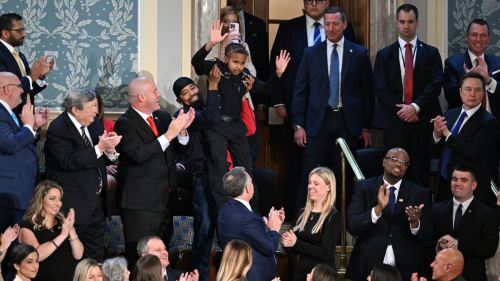

The Young People Who Believe They Can Change Their Race
How far are experts going to go to accommodate playing with race identity, and how far should Christians go in return?
08/25/23
John Stonestreet and Heather Peterson

Last month, an article published on NBC described “[p]ractitioners of ‘race change to another,’ or RCTA,” which refers to people who “purport to be able to manifest physical changes in their appearance and even their genetics to truly become a different race.” Interviewed for the article were teenagers who are enamored with Japanese and Korean cultures and who have become convinced that, by listening to subliminal messages while they sleep, they will eventually wake up with Asian characteristics, such as eyes with an epicanthic fold.
Even more unbelievable than the idea that subliminal messaging can alter a person’s genetics was the attempt at ethical analysis by journalist Emi Tuyetnhi Tran. According to Tran, RCTA is wrong, but not because those with the delusion entertain desires that will never become reality. Instead, RCTA is wrong because of inequality:
Experts agree race is not genetic. But they contend that even though race is a cultural construct, it is impossible to change your race because of the systemic inequalities inherent to being born into a certain race.
In other words, young people with this particular identity crisis should not be told what they desire is impossible due to the constraints of physical reality, but that they are violating certain social theories. What Tran fails to explain is that if race is merely a social construct as gender is now understood to be, why is appropriating a different gender identity acceptable but not a different racial identity? On what grounds should we, for example, oppose the actions of someone like Rachel Dolezal, a white woman who became leader of a local NAACP chapter?
In fact, though there are physical distinctions between races, the physical differences between the sexes are far more profound. Nineteenth-century ideas of divinely ordained, distinct races that ought not be “mixed” was rooted in dangerous, racist nonsense that can neither be supported biblically or biologically. The differences that are emphasized are typical generalizations more closely related to cultural differences than anything essential. However, people have tended to tie these assumptions to racial categories.
The biblical account, in contrast, describes a single human race that was created by God to bear His image before the rest of His creation. The different “tongues, tribes, nations, and languages” arose when God dispersed Noah’s descendants, spreading humans across the Earth to fulfill their purpose. Thus, the biblical narrative grounds and explains both the universal dignity and value that all humans possess, as well as their physical, cultural, and genetic differences. Race is too narrow a concept to explain these differences. It is best understood, as apologists Neil Shenvi and Pat Sawyer explain in their forthcoming book Critical Dilemma, as a social construct (though not all differences can be attributed to social construction).
Genetic variances among people are significant enough to produce observable physical differences. For example, different races demonstrate specific predilections toward different kinds of cancer. Even if a few confused teenagers believe that epicanthic folds are only a social construct and not genetic, that doesn’t change reality. What becomes obvious in Tran’s article is that acknowledging these realities without violating our society’s “new rules” requires quite a bit of intellectual gymnastics. For example, one article cited by Tran suggests that genetic variation among humans should be understood wholly differently than the concept of race. A Ph.D. candidate at Harvard Medical School suggests the use of “ancestry” language instead of “race” language. This quickly feels like a word game, especially when the only ones allowed to use the word “race” are those who lob accusations of racial supremacy.
The more fundamental problem–the one at the root of this and every one of the many identity crises infecting our cultural moment–is that so many young people have absorbed a way of thinking about themselves and reality best identified as “expressive individualism.” For years, they’ve heard that the world is whatever they decide and make of it, that their bodies are plastic and do not govern who or what they are, and that what is most true about themselves and the world is how they feel on the inside. Why wouldn’t they assume that one day they could wake up with the eyelids they really, really want?
An overwhelming identity crisis among young people is also a clear indicator of what the Church is being called to in this time and this place. Testifying to the work of Christ in the world, which is always the calling of the Christ-follower, must include testifying to the work of Christ in creation. John 1 and Colossians 1 are clear: Christ was present and at work in the creation chapter of God’s story. Proclaiming the Good News today must involve pointing to God’s good design of human beings, how He created them in His image. That must include theological instruction about the human body, especially in the wake of a dramatic increase in depression and anxiety among teens and of a growing number of “detransitioners” dealing with regret and facing the long-term harm of our culture’s worst ideas.
This Breakpoint was co-authored by Dr. Heather Peterson. For more resources to live like a Christian in this cultural moment, go to breakpoint.org.
Have a Follow-up Question?
Up
Next

Related Content

© Copyright 2020, All Rights Reserved.













